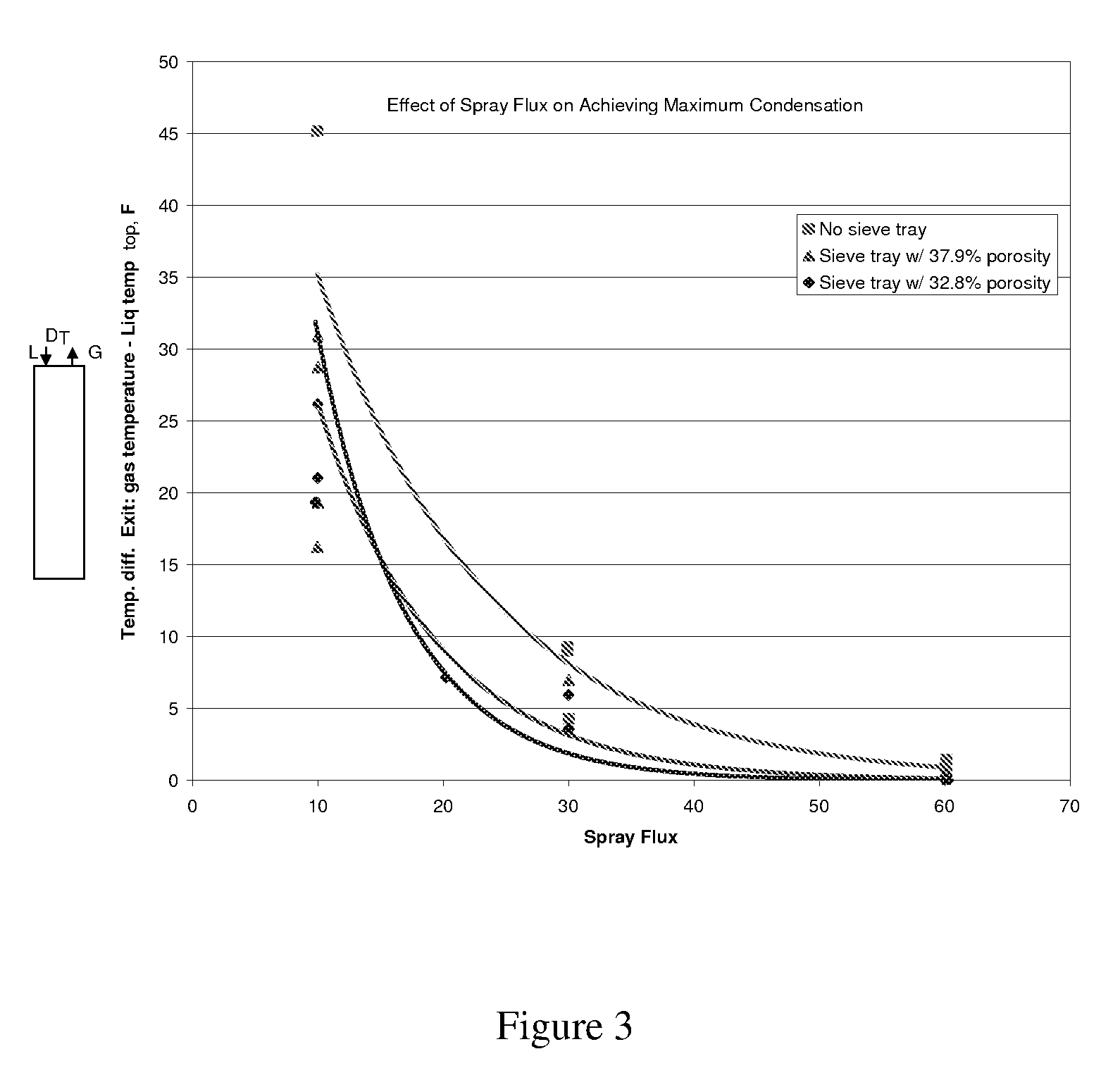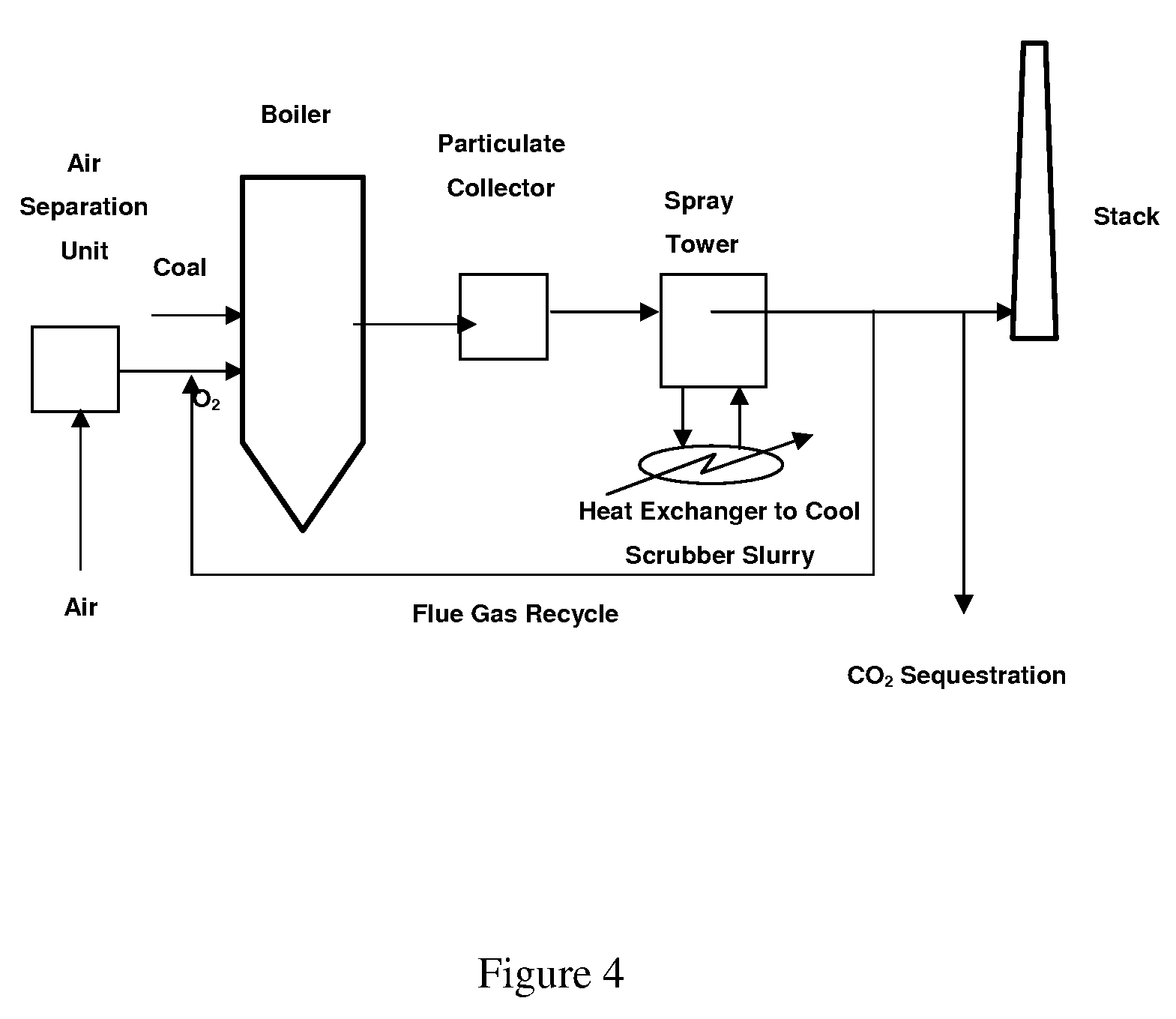Process for controlling the moisture concentration of a combustion flue gas
a technology of combustion flue gas and moisture concentration, which is applied in the direction of combustion types, separation processes, lighting and heating apparatus, etc., can solve the problems of increasing the cost of carbon dioxide capture, transportation and disposal technologies, and the ability to operate at significantly higher temperatures, so as to achieve the effect of convenient collection
- Summary
- Abstract
- Description
- Claims
- Application Information
AI Technical Summary
Benefits of technology
Problems solved by technology
Method used
Image
Examples
Embodiment Construction
[0029]The present invention generally relates to a method of utilizing a spray tower to regulate the moisture concentration of a flue gas. In embodiments wherein spray towers such as wet scrubbers are used, the present invention provides for a method of duel purpose, wherein contaminants such as SO2 are removed in addition to the regulation of flue gas moisture concentration.
[0030]Referring to FIG. 4, a schematic representation of a combustion process according the present invention if shown. Oxygen and coal are supplied to a boiler upstream of a particulate collector and a flue gas desulfurization unit. The flue gas desulfurization unit is equipped with a heat exchanger to cool the liquid reagent. The liquid reagent is cooled to a predetermined point below that of the flue gas inlet temperature water vapor dew point and sprayed into the flue gas. A portion of the cooled flue gas is then reheated and recirculated to the pulverizer and burners to facilitate combustion. The recirculat...
PUM
| Property | Measurement | Unit |
|---|---|---|
| temperature | aaaaa | aaaaa |
| temperature | aaaaa | aaaaa |
| adiabatic saturation temperature | aaaaa | aaaaa |
Abstract
Description
Claims
Application Information
 Login to View More
Login to View More - R&D
- Intellectual Property
- Life Sciences
- Materials
- Tech Scout
- Unparalleled Data Quality
- Higher Quality Content
- 60% Fewer Hallucinations
Browse by: Latest US Patents, China's latest patents, Technical Efficacy Thesaurus, Application Domain, Technology Topic, Popular Technical Reports.
© 2025 PatSnap. All rights reserved.Legal|Privacy policy|Modern Slavery Act Transparency Statement|Sitemap|About US| Contact US: help@patsnap.com



